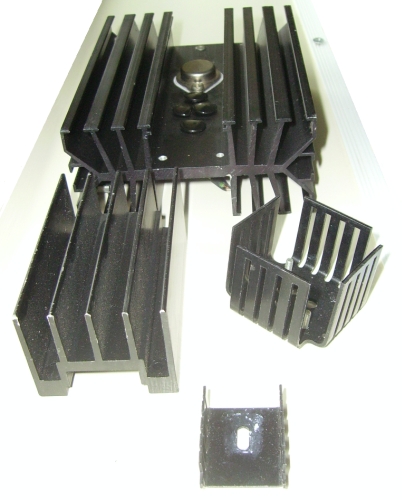
| GCSE Components >Heat Sink< Inductor Back EMF Transformer |
Components Heat Sink |
|
 |
Heatsinks rely on ...
Exam AnswerFor good marks, be sure to use the words, conduction, convection and radiation in your exam answer. For each word explain how the heatsink works. |
Heat Sink Ratings or Thermal ResistanceThe heatsink thermal resistance number tells you how much the heatsink temperature will rise when one watt of heat is dissipated. Bigger heatsinks get rid of waste heat more easily so their temperature rises less so lower numbers indicate more effective heatsinks.
Power_Dissipated = Volts x Amps P = V I |
|
Subject Name Level Topic Name Question Heading First Name Last Name Class ID User ID
|
Q: qNum of last_q Q ID: Question ID Score: num correct/num attempts Date Done
|
Question Text
image url
Help Link
Add Delete Clone Edit Hardness
Contact, Copyright, Cookies and Legalities: C Neil Bauers - reviseOmatic V4 - © 2016/17
Hosted at linode.com - London
Please report website problems to Neil